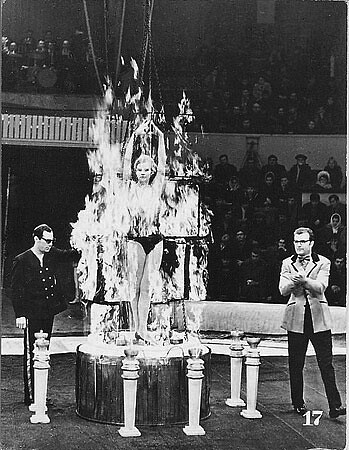I recently recalled the precise moment when it first occurred to me that I would like to become an artist. I grew up in Moscow, and my father was a self-taught musician working at the circus. Circus artists work extremely hard physically: the amount of daily practice and physical exercise necessary to perform acrobatic acts or walk a tightrope is really enormous. They practice and exercise all day and perform by night—it’s nearly a twenty-four-hour-a-day job.
There was a birthday party for one of the kids in the building we lived in, which belonged to the union of circus artists. The children at the party, all about five or six years old, were children of clowns, animal trainers, and so forth. We were watching a cartoon on TV and at some point a conversation started about what we wanted to become when we grew up. Following the usual suggestions like a cosmonaut or a fireman, one of the kids said that he wanted to be a fine artist, because they do not work. I was very shy as a kid, so I did not say much, but thought to myself that this boy was really clever and that I too did not want to work and should therefore try to become an artist.
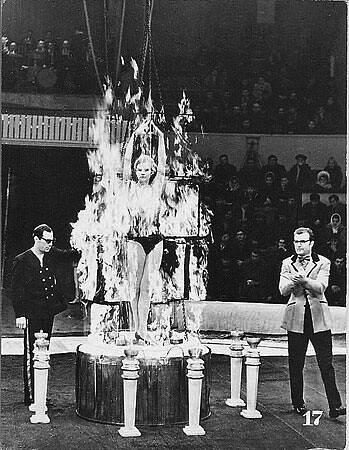

Ironically, this momentary realization ultimately pointed me on a trajectory that led to a perpetual state of work for many years: while my classmates in school tended to just hang out or play sports after class, I went to drawing lessons every evening. When my family moved to America, I enrolled in three schools simultaneously: the School of Visual Arts by day, Art Students League classes by night, and group life drawing lessons on weekends. Somehow the idea of not working went out the window, and all throughout my artistic education the emphasis was on work: the idea being that I had to fill all my available time with learning and practice, and that the sheer effort of this was bound to make me an artist. Perhaps this occupation of time was also practice for my future career: being a professional artist in a society where labor and time are still the ultimate producers of value. So the logic was that if all my time was filled with the labor of learning the skills of an artist, perhaps something of value would be produced, leading to a lifetime occupation by artistic labor. Thinking was of relatively little importance within this scenario.
I have to add that the system of non-university art education at the time (the 1980s) aided such an approach, because it made it possible to avoid academic studies almost entirely— literature, history, philosophy, and so forth—in favor of studio practice geared toward contriving some sort of artistic style that would be marketable.
Sometime in graduate school I started to get the sense that all this was not getting me very far artistically, that some other approach or modality of practice was possible. I don’t mean getting far only in terms of a career—although I remember this being a fairly serious concern for most people in my program—but on a basic level of just not not being convinced that the paintings and objects I was making were particularly compelling as art objects despite all the labor I put into making them. Thus there was a real urgency to find some other way to go about this, but what this other way could be was confusing and very mystifying: it was not so much about becoming a slacker artist, but rather a realization that an entirely different type of engagement was necessary in order for an artistic practice to make sense beyond appearances—beyond merely looking like art.
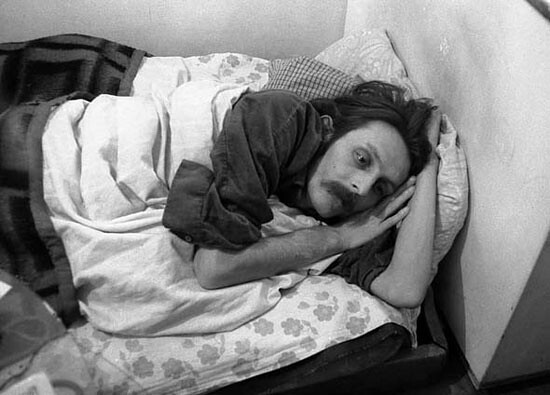

Since the early twentieth century, much of the advanced analysis of art production refers to the position of the artist and the intellectual as cultural workers. I think that it probably seemed highly desirable to see yourself as a member of the most dynamic class, a class that was expected to dominate the making of history: the working class. While rereading The Communist Manifesto some time ago, it was interesting to note how sure Marx was that the middle class (from which a vast majority of “cultural producers” actually come) is merely a small and historically insignificant group that is destined to vanish during the final confrontation between the bourgeoisie and the proletariat: a battle from which the proletariat was expected to emerge victorious, bringing about the end of History. What progressive agent of culture would want to belong to the middle class, this vanishing species?
To this day, many in the field of art insist on using the term “cultural producer,” a term that supposedly blurs differences between different participants in the art industry—artists, curators, critics, historians, administrators, and patrons of art—on the assumption that we are all working together to produce meaning and thus culture.
Much of this language and thinking is predicated on the privileged position of work: that in order for art to come into being, work needs to be done—hard work, important work, expert work, work of art, art work. While there is a lot of disagreement about what type of work is actually required, who should or can do it, or if and how they should be trained for it, it is rarely questioned whether work is actually necessary or essential to the production of art. Duchamp mused whether there could be a work “not of art,” but can there also be an art without work? The readymade is something that immediately comes to mind, yet I feel that using existing objects produced by the labor of others does not solve this particular problem, because it is not about simply delegating, outsourcing, or appropriating. In other words, if the labor of art production is outsourced to others, while the artist and the market benefit by the surplus value it produces, it is merely a perpetuation of the exploitation that creates conditions of alienation in our society. What I mean by art without work is perhaps closer to a situation where you play a musical instrument for the sheer enjoyment of making music, where the activity is a pleasurable one not defined by labor or work per se.
Naturally, making art objects requires labor and work, but art does not exclusively belong to the realm of objects. For example, some years ago I was looking at Matisse paintings at the Metropolitan Museum of Art. As I was leaving the museum, I became aware of a residual sensation that looking at these paintings produced: for some time I was actually seeing things on the street according to the visual logic of the paintings. This made me think that this is exactly where the “art” of Matisse resides—in this ephemeral yet incredibly powerful effect that occurs when you are not looking at the paintings themselves. However, because these works are such expensive, sought-after objects, the museum frames the experience of encountering them as the veneration of fetish objects, where the emphasis is placed on the object itself rather than what it can trigger within the subject. This is very unfortunate. It seems to me that art resides within and in between subjects, and subjects don’t always require work to produce themselves. For example, falling in love, or having a religious or aesthetic experience does not require work, so why should art require work to come into being?
Conceptual art becomes an important modality of practice in this respect: while conceptual artists managed to shift much of the work involved in art production to the viewer via self-reflexive framing, and explicitly stated that objects of art need not be made at all,1 I feel that the ethos of their approach is something quite different than the condition I am trying to describe. Not surprisingly, much of conceptual art suffered the same fate as Matisse, ending up as prized objects in private and public collections.
Another aspect of all this is a certain shift that art underwent with the industrialization of society. In traditional societies, that which we now call art was something more practical or utilitarian in nature: it had a clear decorative, religious, or other use value, and it did not require a special social space/framework, like an exhibition or a museum, within which to become understandable as art. In this sense art was much more integrated in everyday life and did not involve the kind of suspension of reality that many artists of our time find so frustrating: a context in which you have freedom to utter virtually anything, but on the condition that it’s not real because it’s art.
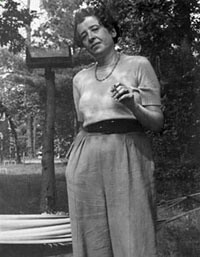

Hannah Arendt strikes a leisurely pose. Manomet, Mass., 1950.
The question of work has also become a very polemical issue these days, and particularly so in the field of art and culture. What is work for an artist within our post-Fordist blur between life and work, freedom and alienation? It’s useful to refer to distinctions that Hannah Arendt draws between labor, work, and action. For Arendt, labor corresponds to a basic need for human life to sustain itself, such as farming, preparation of food, etc. Work goes beyond the satisfaction of immediate needs and corresponds to the human ability to build and maintain a world fit for human use, while action is “the only activity that goes on directly between men without the intermediary of things or matter, [and] corresponds to the human condition of plurality.”2
I suppose Arendt’s understanding of this was inspired by the ancient Greeks, who frowned on the idea of work: labor was for slaves; free citizens were expected to engage in politics, poetry, philosophy, but not work. The only type of occupation not looked down upon was apparently that of a shepherd, presumably because when one herds animals, one is not fully occupied and thus free to think.
While I am not completely sure that action, in Arendt’s beautiful definition, is always applicable in describing conditions that enable the production of art, I suspect that certain types of art practices can turn labor and work into action, and in doing so, free art from a dependence on labor and work.
Historically there have been different approaches to realizing this, yet all seem to converge on a concern with conditions of production. If art is produced as an outcome of certain conditions (rather then simply an act of genius, which is not interesting or possible to discuss), then creating such conditions would actually produce art. If the ultimate conditions of production are the world and life (rather than a studio or art museum), it would then follow that a certain way of living, of being in the world, would in itself result in the production of art: no work is necessary.
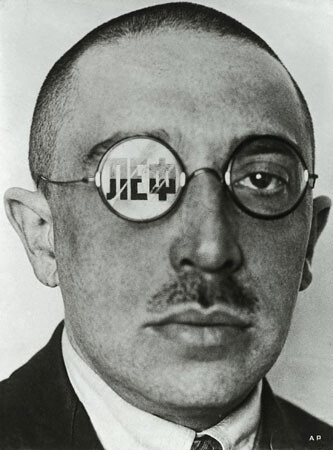

Such interdependence between art and life, and the state of the subject therein, was a central concern for many artists of the early-twentieth-century avant-gardes. It seems that the thinking at the time was that the production of a new way of life would not only result in the production of a groundbreaking, revolutionary art, but also the other way around: that the production of a new type of art would result in a new way of life and, in turn, a new subject. One of the instances of this is Lef magazine, co-published by Rodchenko, Mayakovsky, and others, the explicit goal of which was to produce such a new subject through exposing its readers to new content and form, to new art.
Last winter I spent a lot of time looking at Warhol’s films from around the mid-’60s. I found the complex structure he put in place for the production of these films really interesting: while Warhol’s silkscreen paintings from this period garner most attention from art historians (in part because they are expensive objects in museums and private collections), it is as if he had them made in order to fund his films, which were expensive to create but produced no income. It’s tempting to understand this simply as a situation where someone works explicitly for money to fund the production of his “real work”—his art. However this simple dichotomy does not play out here: Warhol is very blunt about his apparent indifference to the production of his paintings and objects in interviews from that period, where he is clear that not only are the paintings and objects physically made by studio assistants, but even their subject matter is determined by others, and his involvement in the films is not very different—the screenplays are written by someone else, he does not direct the actors, or shoot the films, or edit them. The set for the most part is just his studio: the Factory.


One of my personal favorites is a film called The Couch (1964), in which, according to Gerard Malanga (who found the featured red couch on the street and brought it to the Factory), documents the fact that every time other activities at the Factory were finished or exhausted, someone would just start filming the couch and whatever was taking place on it at the moment: conversations, eating, sex, and so forth. The films do not seem to be made to be watched in their entirety, which is something that would be hard for most filmmakers to accept: you want the audience to see the totality of your work, no matter how experimental, and it’s frustrating when people stop paying attention or leave midway through the piece. Yet the majority of Warhol’s films seem to have a built-in indifference to this.
In one of the interviews I saw, from 1966 or so, Warhol says point blank that he has not worked in three years and is not working at the time of the interview. It’s easy to assume that this is only another evasive maneuver or provocation, which he was so good at during interviews, yet it seems to me that he was actually being very direct: having created certain conditions for production, he was present, yet did not need to work in order for significant art to come into being. Perhaps he was simply being physically present within the structure he set in motion.
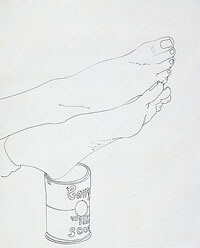

It also seems to me that the most important mechanism of the Factory, its central activity, was not so much the production of art objects or films, but the production of very particular social relations: a new way of life that in turn resulted in films and other things. Warhol, the proponent of Business Art, may seem to be artistically far from the idealist or utopian avant-garde, but the structures he was using were not so dissimilar: a certain kind of de-personalization of an artwork using a collective approach rooted in a creative community—strangely reminiscent of De Stijl, Bauhaus, and so forth—all of which placed just as strong an emphasis on the reorganization of life and social relations as on the production of art. I find that, far from being dated or obsolete, this type of model is of particular significance today, facilitated and amplified by the emergence of powerful and free tools for communication, production, and dissemination found mostly on the internet, which together create a possibility for a degree of autonomy from capital.
A different yet sympathetic approach to not working can be found in the artistic practice of Rirkrit Tiravanija. Although his work has been fully absorbed and valorized by art institutions and the market, he is rather adamant that much of his activity is not art at all. In fact, once you start questioning him, it turns out that almost nothing he does, with the exception of the occasional painting, sculpture, or drawing, is, in his opinion, art. And this is not mere posing or a provocation: it seems to me that this comes from a deep reverence for a certain capacity of the everyday and a desire to explore this capacity to its fullest, most radical extent.
A couple of years ago we did something in New York which involved turning e-flux’s storefront into a kind of a free meal/discussion space where three days of conversations on contemporary art took place during lunch and dinner sessions. Rirkrit did most of the cooking, with some help from his assistants and friends. I never noticed how much Rirkrit actually works when he cooks for a large number of people. Each of the three days started early, around seven or eight in the morning, with food shopping. Food preparation started around eleven, to be ready in time for lunch sessions, followed by a couple of hours of cleaning. Then shopping again for dinner (no refrigerator during the hot New York summer), cooking, and cleaning again until past midnight. Not having a real, equipped kitchen makes food preparation, cooking, and cleaning very labor intensive. On the other hand, spending most of his time in the improvised backyard kitchen allowed Rirkrit to not engage in the conversation and to not speak or answer questions about his art, which is something I think he does not like to do. When asked if what he was doing is art, Rirkrit said no, he was just cooking.
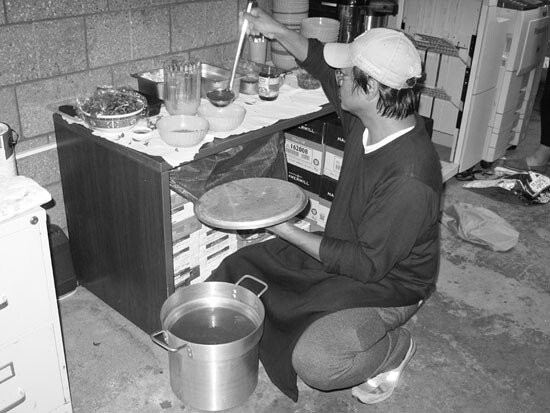

I think what happens here is that rather than speak or work in the capacity as an artist, Rirkrit prefers to make himself very busy doing something else in the space of art. Furthermore, not unlike the Factory, yet dispersed amidst many different art venues and dates, Rirkrit’s activity manages to temporarily construct a rather peculiar set of social relations between those in attendance. While he displaces the art object and the figure of the artist from its traditional place at center stage (to the kitchen), perhaps reflecting Duchamp, his presence usually forms a quiet yet influential and shape-giving center for those present. Rirkrit does manage to produce art while not working in the capacity of an artist, yet to do so he really makes himself very busy: he works very hard doing something else.
I feel that the ethos behind much of this has to do with the communist dream of non-alienated work. When Marx writes about the end of division of labor and narrow professionalization, he describes a society where identity and social roles are extremely fluid: one day you can be a street cleaner, the next day an engineer, a cook, an artist, or a mayor.3 In this scenario, alienation disappears and art becomes indistinguishable from everyday life: it dissolves in life. Historically there is a clear trajectory of this desire for the dissolution of art, which is visible in artistic practices from early modernism to the present day. This desire may be actually older than communism and, in a certain way, it outlasts the collapse of communist ideology, which makes me think that this may be something deeper than ideology. It could be that this desire has to do with a need to reclaim a reality that art may have had prior to the industrialization of society.
Lawrence Weiner, Declaration of Intent (1968): 1. The artist may construct the piece. 2. The piece may be fabricated. 3. The piece need not be built. Each being equal and consistent with the intent of the artist the decision as to condition rests with the receiver upon the occasion of receivership.
Hannah Arendt, The Human Condition (Chicago: The University of Chicago Press, 1958), 7.
Karl Marx, The German Ideology (1845) (Amherst, NY: Prometheus Books, 1998), 53: For as soon as the division of labour comes into being, each man has a particular, exclusive sphere of activity, which is forced upon him and from which he cannot escape. He is a hunter, a fisherman, a shepherd, or a critical critic, and must remain so if he does not want to lose his means of livelihood; whereas in communist society, where nobody has one exclusive sphere of activity but each can become accomplished in any branch he wishes, society regulates the general production and thus makes it possible for me to do one thing today and another tomorrow, to hunt in the morning, fish in the afternoon, rear cattle in the evening, criticise after dinner, just as I have a mind, without ever becoming hunter, fisherman, shepherd or critic. This fixation of social activity, this consolidation of what we ourselves produce into material power above us, growing out of our control, thwarting our expectations, bringing to naught our calculations, is one of the chief factors in historical development up till now.
